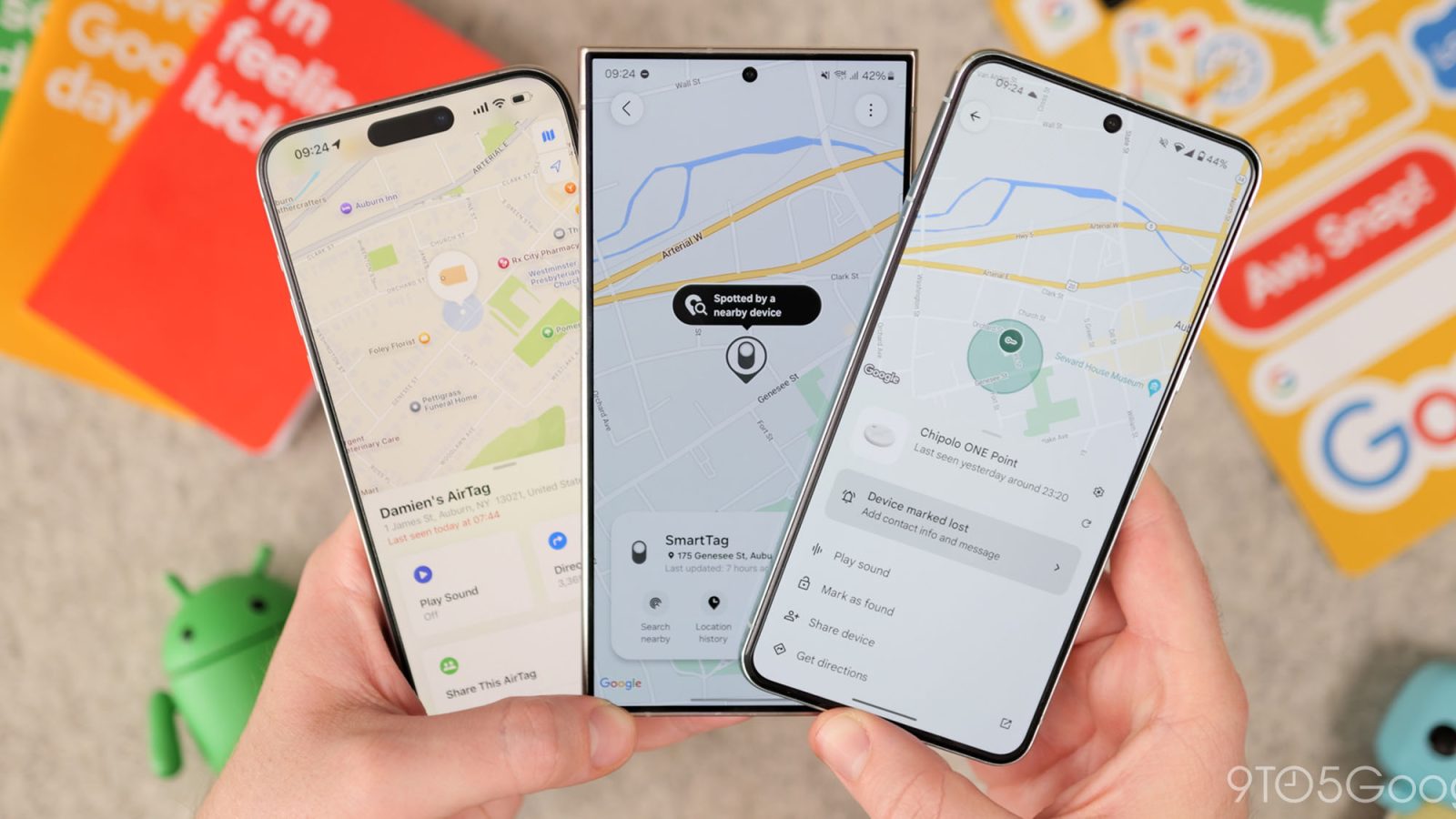
Google’s rollout of the Find My Device network has been a disaster so far. The lack of high-quality trackers has exacerbated the situation, too. But how does the current crop stack up against the best of the rest? Our in-depth and comprehensive deep dive might give you some long-awaited answers.
Inspired by a recent test in which Reddit user /u/chiselplow shipped themselves an AirTag and Pebblebee tracker, the idea was to go a few steps further and put the current crop of Find My Device trackers on Android to the test. This flourished into an idea to ship four like-for-like trackers across the globe to see how each option faired.
A few ground rules were formulated to make this a “fair test.” Firstly, we omitted limited tracking options like Tile. For a Tile tracker to work, you rely heavily on the dedicated application. If someone doesn’t have it installed, your device can’t be pinged for location data. These trackers can ping each other to create a mini mesh, but this isn’t as extensive as a global network of devices all working together to locate items like Find My Device, Apple Find My, and Samsung’s SmartThings networks.
Table of contents
The testing process

It’s impossible to simulate how you might misplace or lose something and accidentally “losing” all four trackers wasn’t an option here. Instead, we shipped our test trackers from the UK to the US. Rather than using expedited or direct shipping methods, we chose to use the local postal services and have the following devices filter through the shipping networks simultaneously:
All trackers are placed in one package. This means that if there is any discrepancy in location, it’s easy to see which tracker is reporting incorrect information. From the initial shipping date and then every 24 hours, each device will be checked to see where the corresponding network pinpoints the item. Because the SmartTag and AirTag are working on more robust networks and have UWB support, the Android Find My Device trackers will be set to “Lost” to give them further opportunities to be detected in the field.
The real-world results
With all trackers in one package, Royal Mail International Standard shipping was used. This has a 6-7 working day (Monday-Friday) projected shipping estimate. The first leg is shipping from Leeds, UK, and the final destination is Auburn NY, USA. If, for whatever reason, this fails, the item will be returned to the original sender.
Why didn’t we use one of the major shipping companies? The answer is simple: shipping companies like FedEx or DHL use their own infrastructure to ship packages and other freight to private airports and other company-owned facilities. By using local and international postal systems, they will utilize existing infrastructure and also follow more reliable transit paths. That makes them a better system to test the robustness of the Find My Device network.
It’s not a flawless methodology, but this gives the Android trackers a better chance of stacking up against the alternatives.
Day 1 – 24 hours later
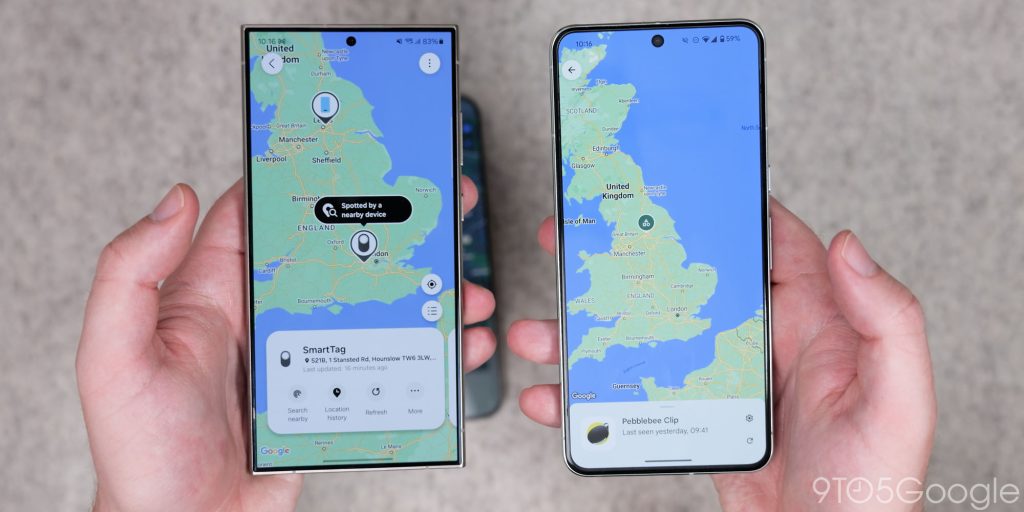
The first 24 hours gave a somewhat predictable result. Apple’s AirTag and the Samsung SmartTag2 were instantly located some 200 miles from the original shipping location at Heathrow Airport. Sadly, even after being marked as “Lost,” the Chipolo and Pebblebee trackers were still showing at a postal storage and sorting facility with no movement whatsoever. There are a number of reasons for this, most notably the slow expansion of the Find My Device network in the UK.
Day 2 – 48 hours later
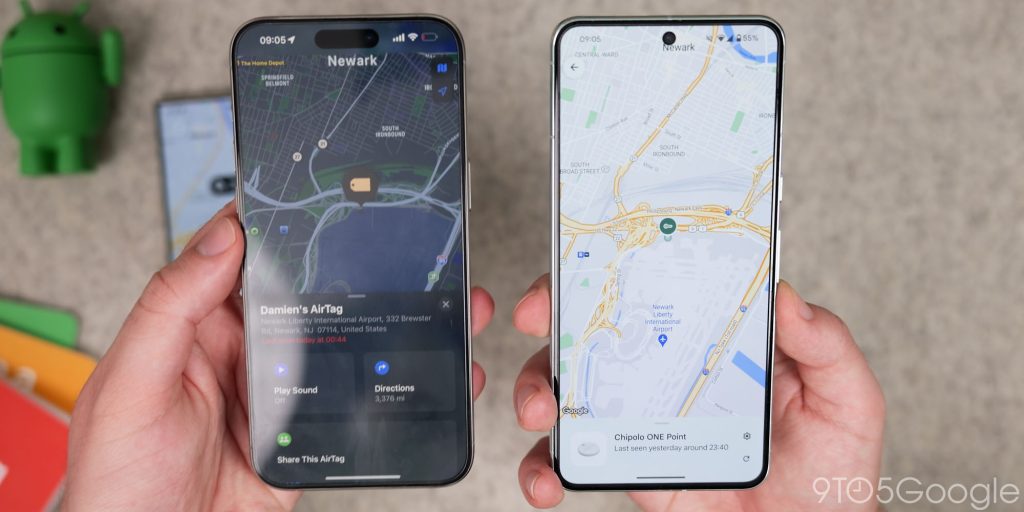
Almost 40 hours after shipping out the package containing all four trackers, I finally received an email to indicate that the Chipolo and Pebblebee trackers had been located via the Find My Device network.
After checking the location, all four trackers were listed as arriving in the US at Newark International Aiport, clearly indicating that at least one iPhone had pinged the AirTags, a Galaxy phone had pinged the SmartTag2, and two Android phones with Find My Device network active had pinged the Chipolo and Pebblebee trackers.
There were some distance discrepancies between all four tags, but all were within a 100-meter radius of the likely location where the package would be stored in an airport facility.
Day 3 – 72 hours later
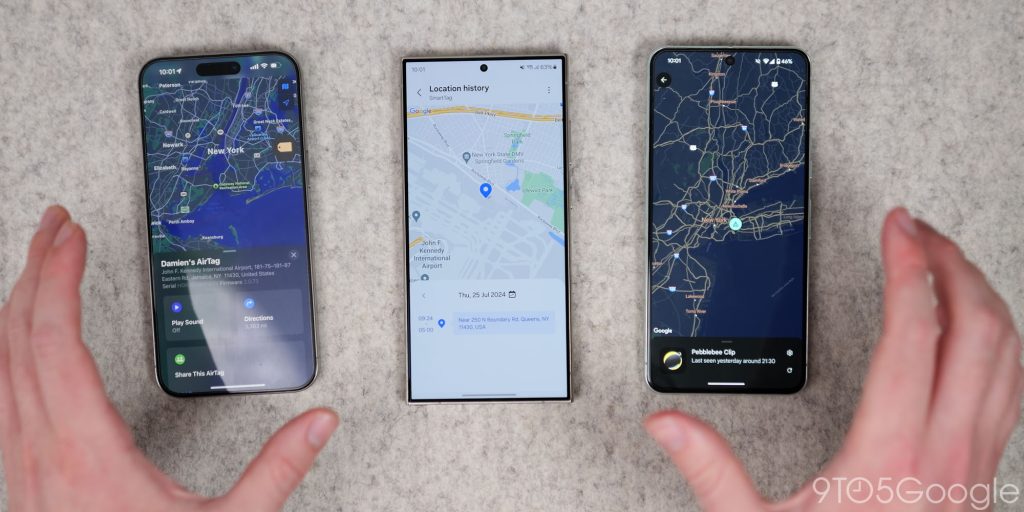
After 72 hours, all three trackers were tracked to John F. Kennedy Airport across town from the original landing point. The location discrepancies were less pronounced at this time. However, it was clear that the AirTag was getting location updates more regularly than the other trackers. The Samsung SmartTag2 was able to get updates on a regular basis, while the Chipolo and Pebblebee trackers were updated much more infrequently.
Day 4 – 96 hours later

Day 4 started well for all of the trackers. All were located in the same place and within a few metres of each other. Again, reaching a local package depot likely meant that lots of workers had devices able to connect or ping all of the trackers before heading out to the next destination.
Almost 4 hours later, I decided to check just how the Find My Device trackers were handling being moved at regular intervals. This did not go well. While the AirTag and SmartTag2 could be tracked while in motion on a highway, the Chipolo and Pebblebee trackers were firmly rooted at the location that was pinged earlier in the day with no updates or movement. The distance discrepancy was almost 80 miles, showing just how wildly inaccurate Google’s network can be if regular pings are not forthcoming.
Day 5 – 120 hours later
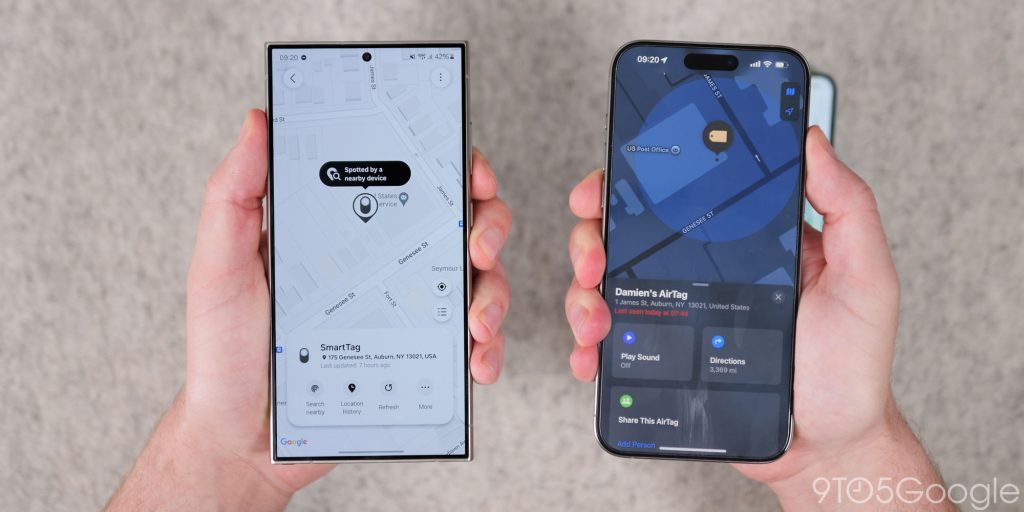
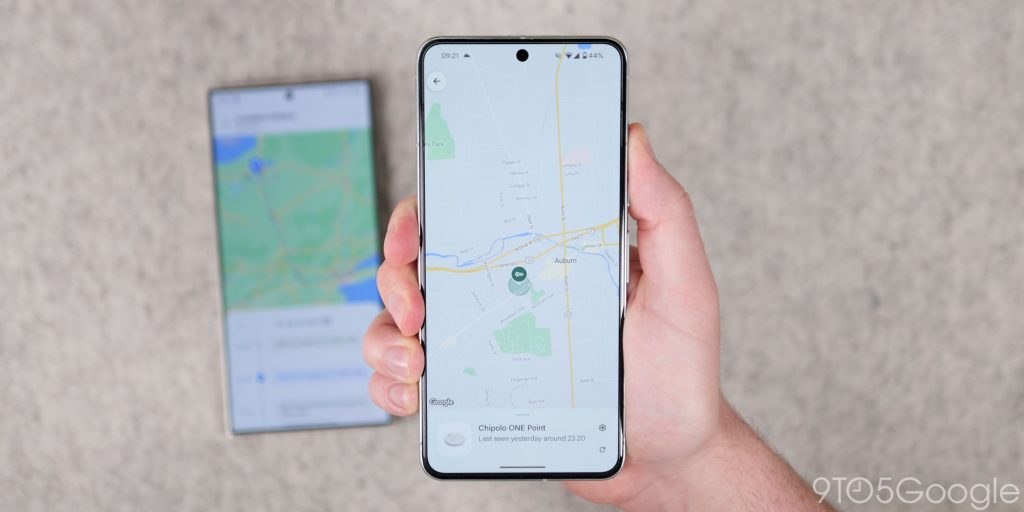
The penultimate test day was another notable success for all but the Pebblebbe Clip. Unlike the AirTag, SmartTag2, and Chipolo tracker, it showed almost 30 miles away from the final destination in Syracuse, NY. Not a good look.
This didn’t change after hitting refresh and is more puzzling, given the Chipolo tracker was in the exact same spot as our other test devices. There are hundreds of potential reasons that the Pebblebee Clip didn’t update its location but had not been pinged since the previous day at around 9:20 pm BST or 5.20 pm ET despite being connected to the same account as the Chipolo tracker.
Day 6 – 144 hours later
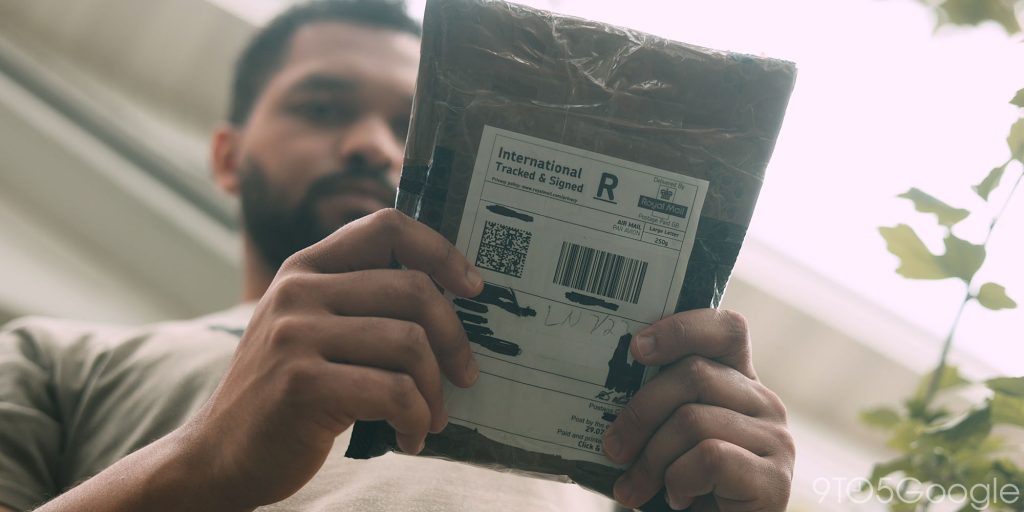

The final leg of the test was directly to the true final destination. As noted, the AirTag could almost be tracked in real-time, with pings coming every 5-10 minutes on average. The SmartTag2 wasn’t far behind. It could almost be tracked in real-time as it meandered around before the package was eventually delivered.
Things were a little rocky with the Android Find My Device trackers. Pings were less regular. Instead, I could see snapshots of locations the trackers had visited every few hours – which might be enough to give an idea of where you left something.
What do these test results mean?

One thing that was instantly noticeable was how well Samsung’s first-party tracker handled this test. Given the widespread use of iOS devices in the US, the Apple AirTag consistently performed better in our tests, regardless of conditions.
Any current or future Bluetooth trackers that work with Google’s Find My Device network will likely suffer from similar problems due to the default configuration. For end-point tracking, they are acceptable and fairly reliable. As it stands, I wouldn’t fully trust a tracker utilizing the Find My Device network beyond getting the information on the last place I left something.
This test also showed just how robust Samsung SmartTag2 trackers can be. The 7-day location timeline is something that could be very valuable if you do lose something and want to try and get it back. Privacy question marks aside, implementing something like this would at least make future trackers on Google’s network more appealing.
Features like this highlight the basic nature of the FMD app on Android. A simple app is always good, but in the quest for simplicity, some of the utility has been omitted. When you lose something, you want to find it. The visual elements and aspects are secondary to good, accurate tracking.


Top comment by Jackie Daytona, Human Bartender
I assume Google could solve this by pushing an update to all Android devices to unilaterally change the default settings? But then I also assume there would be blowback from consumer advocates, etc. Well, that didn't stop Apple, so...
By no means is this the most extensive test that could be done. And we’re well aware that some improvements can be made. For instance, checking in and tracking every 3-4 hours would give even more accurate timelines. However, this undoubtedly favored the UWB-enabled trackers from Samsung and Apple, as pinpoint location data can be derived faster than Bluetooth alone.
Google’s insistence on using default settings that prioritize high-traffic network areas rather than working everywhere as standard. Finding trackers even in your own vicinity can be tricky, which makes this kind of test even more illuminating. The extra steps required and multiple devices required to ping a tracker just to get more accurate location tracking means that you’re ceding the lead and accepting third position despite having the biggest potential global network.
I’m not entirely sure how this is fixed, but it’s hard not to wonder how Google fumbled this so badly. Find My Device isn’t completely without merit, but it’s not exactly fit for purpose.
If a solution isn’t forthcoming, it’s hard to look past the Apple AirTag or Samsung SmartTag2, especially when keeping track of your prized possessions. Despite the setup frustrations, at least you’ll always know where your stuff is. You’re getting much better value from the $24 AirTag or $22 SmartTag2.
FTC: We use income earning auto affiliate links. More.




Comments